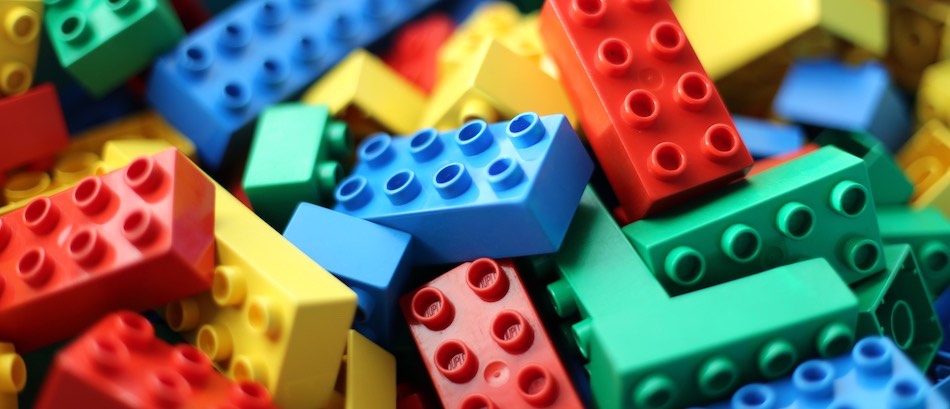Acrylonitrile Butadiene Styrene (ABS): A Tough and Diverse Plastic
What is ABS?
Acrylonitrile Butadiene Styrene (ABS) is a terpolymer, or a polymer composed of three different monomers. This amorphous blend is made up of acrylonitrile, butadiene, and styrene in varying proportions. Each one of these monomers serve to impart an advantage to ABS: acrylonitrile provides chemical and thermal stability, butadiene increase toughness and impact strength, and styrene gives the plastic a nice and glossy finish.
Variations in the relative proportions of each monomer can result in drastic changes in the physical properties of ABS. The proportions of individual monomers may vary from 15% to 35% acrylonitrile, 40% to 60% styrene, and 5% to 30% butadiene, resulting in a variety of plastic products suitable for different applications. In addition, blends with other materials such as polyvinylchloride (PVC) and other polycarbonates and polysulfonates have been developed.
The discovery of ABS started with the desire to improve on the synthetic rubber styrene-butadiene (SBR). ABS plastics became widely available in the 1950s. The variability of its copolymers and ease of processing made ABS one of the most popular engineering polymers. ABS is one of the most widely used and versatile thermoplastics due to its superior hardness, toughness, gloss, and electrical and chemical resistance. As a ‘bridge’ polymer whose properties lie between commodity plastics and high performance engineering thermoplastics, ABS has become the largest selling engineering thermoplastic.
Table of ABS Properties
| Property | Value |
|---|---|
| Full Name | Acrylonitrile Butadiene Styrene (ABS) |
| Melting Point | Amorphous (no true melting point). Commonly 230°C |
| Glass Transition | 105 °C (221 °F) |
| Injection Mold Temperature | 204 to 238 °C (400 to 460 °F) |
| Density | 1.060–1.080 g·cm−3 |
| Chemical Formula | (C8H8·C4H6·C3H3N)n |
| Tensile Modulus | 310,000 PSI |
| Solublility | Esters, ketones, ethylene dichloride and acetone (not water soluable). |
How is ABS made?
Most ABS is manufactured using an emulsion process chiefly involving the three monomers acrylonitrile, butadiene, and styrene. Acrylonitrile is a synthetic monomer made from propylene and ammonia, butadiene is a product of steam cracking of long-chain hydrocarbons, and styrene is made from the dehydration of ethlyl benzene. The result is a long chain of polybutadiene randomly entangled with shorter chains of polystyrene-co-acrylonitrile.
The nitrile group of the neighboring acrylonitrile monomers develop polar attraction with each other, thereby contributing to the toughness of the polymer. The presence of polybutadiene imparts physical strength to the plastic product via the process of rubber toughening. Due to the interspersed particles of rubbery polybutadiene, the material can absorb more mechanical energy and plastically deform without fracturing.
It is worth noting that ABS is a thermoplastic, meaning it can be heated, set upon cooling, and reheated again to form other shapes without any degradation. In contrast, a thermosetting plastic can only be heated and molded once. This property of ABS makes it a desirable material for recycling.
Recycling of ABS is done by shredding used plastic and removing any unwanted material (metals and other plastics) before the recycled material is blended with virgin ABS. Through controlled mixing of used and fresh ABS, a desirable recycled plastic product can be created.
What are the advantages of ABS?
ABS is a common thermoplastic, and often is able to meet the property requirements at a reasonable price, falling between standard resins (PVC, polystyrene) and engineering resins (acrylic, nylon). The primary advantage of ABS as a material is that it combines the strength and rigidity of acrylonitrile and styrene polymers with the toughness of the polybutadiene rubber.
ABS is exceptionally resistant to chemical degradation, either by alkaline or acidic agents. The chemical stability of ABS lies in the strong chemical bonding as apparent in its structure: the polar attraction between nitrile groups, the aromatic chains in the styrene group, and the hydrocarbon backbone. The strong chemical bonds also provide a degree of thermal stability to the plastic, keeping it from breaking down even at high temperatures. For most applications, ABS can be used between -20 to 80 Celsius,
ABS is an amorphous solid, meaning it technically has no melting temperature. Approximating the process of melting is a glass transition temperature of approximately 105 Celsius. At this temperature, individual polymer chains take on a higher degree of conformation and can move and slide past each other. This property makes ABS a good material for injection molding to form a variety of products. The temperature at which molding is done also affects the properties of the product – molding at low temperature imparts greater strength and impact resistance, while molding at high temperature makes a glossier product with higher heat resistance.
Standard machining techniques can be used to process ABS, such as drilling, sawing, and die-cutting. Standard shop tools can be used to cut ABS and it can also be bent to form by standard heat strips.
Are there hazards in the use of ABS?
ABS is flammable in an open fire or when exposed to very high temperatures. The vapors released by ABS during burning can rapidly burst into intense flames. The combustion or pyrolysis of ABS can produce some toxic products such as carbon monoxide and hydrogen cyanide.
Constant exposure at high temperatures (about 400 Celsius) will lead to the decomposition of ABS. Aside from the loss of material integrity, ABS decomposition will release its hazardous components such as butadiene and acrylonitrile, which are both carcinogenic to humans. This is especially problematic during manufacture of ABS, and due diligence needs to be practiced ensuring that workplace exposure to these carcinogens is kept to below exposure limits.
Concerns in inhaling ultrafine particles (UFP’s) of ABS have been raised, especially during printing or machining activities. Although UFP’s by themselves are a health hazard, this concern is further exacerbated by the carcinogenic components of ABS. It is recommended to wear some form of respiratory protection during the processing of ABS.
What are the applications of ABS?
ABS is one of the most widely-used plastics, and can be found in basic everyday items such as computer keyboards, kitchen appliances, LEGO toys, the plastic guards on wall sockets, and in the protective cases of power tools. The light weight and ability of ABS to be injection molded has made it useful in creating products needing complex and precise shapes, such as musical instruments, automotive components, medical devices, protective headgear, golf club heads, and canoes.
Aside from the mechanical advantages of ABS, it also has good electrical insulation properties. The electrical properties Of ABS manifest well at a wide range of frequencies, and even in high temperature and high humidity environments. This makes ABS suitable as a protective material for electrical parts such as chips and cables.
ABS can be extruded into very thin filaments, and used as material for 3D printers It is one of the most preferred materials for 3D printing due to its durability and ability to withstand higher temperatures. Plastic products made from ABS also come out looking better with a glossy and opaque finish. A common alternative to ABS is PLA in 3D printing.
From kitchen tools to car panels, ABS seems to be everywhere. Its durability and high heat resistance, as well as its versatile physical and chemical properties, makes it one of the best choices of material for plastic manufacturing and processing. According to industry experts, the use of ABS is predicted to grow by 4% to 5% annually. It seems that ABS will not be replaced as one of the most used plastic materials anytime soon.




I work for a company that services power tools. The casing, I assume, is made from PBS. When servicing these tools we need to clean the surface. the surface has oil, grease and scratches in the surface. To improve the presentation of the tool I was considering to clean and polish the surface with a lambswool buff in a power tool. On the Internet I have found some possible recommendations to clean and polish the surface, they are toothpaste and baking soda. What would be your recommendations to clean and polish this surface?